There’s been an increase of Covid-19 cases in Singapore over the past few weeks. Daily numbers were hitting at least 1,000 in the past week. Since Saturday 18 September, home recovery has been extended to those up to 69 years old who test positive for Covid-19.
Home recovery is now the default care for those who meet the following criteria:
- Fully vaccinated
- Aged 12 to 69 years old
- Have no or mild symptoms
- Have no severe diseases or comorbidities
- Doesn’t have household members over 80 years old, or in vulnerable groups, including those who are pregnant, immunocompromised or have multiple comorbidities
- Can isolate in a room, preferably with an attached bathroom (which usually is the master bedroom)
They’ll be assessed by a doctor via telemedicine and contacted by a Home Recovery Buddy on the home recovery procedure.
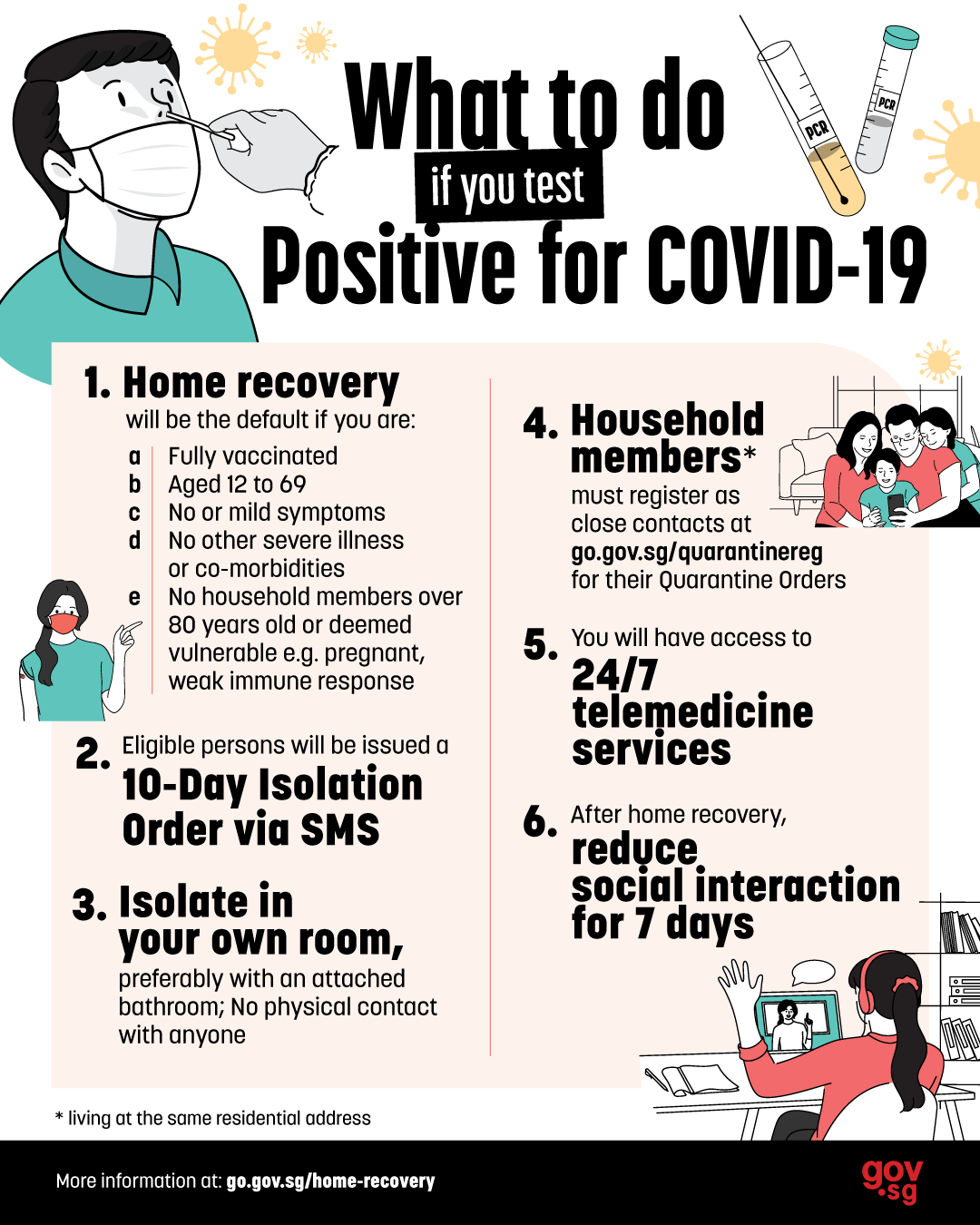
At the same time, household members will need to register themselves as close contacts to get a quarantine order. They’ll also need to take a PCR test at a Regional Screening Centre (where they can take free ART test kits) and be on home quarantine for 10 days.
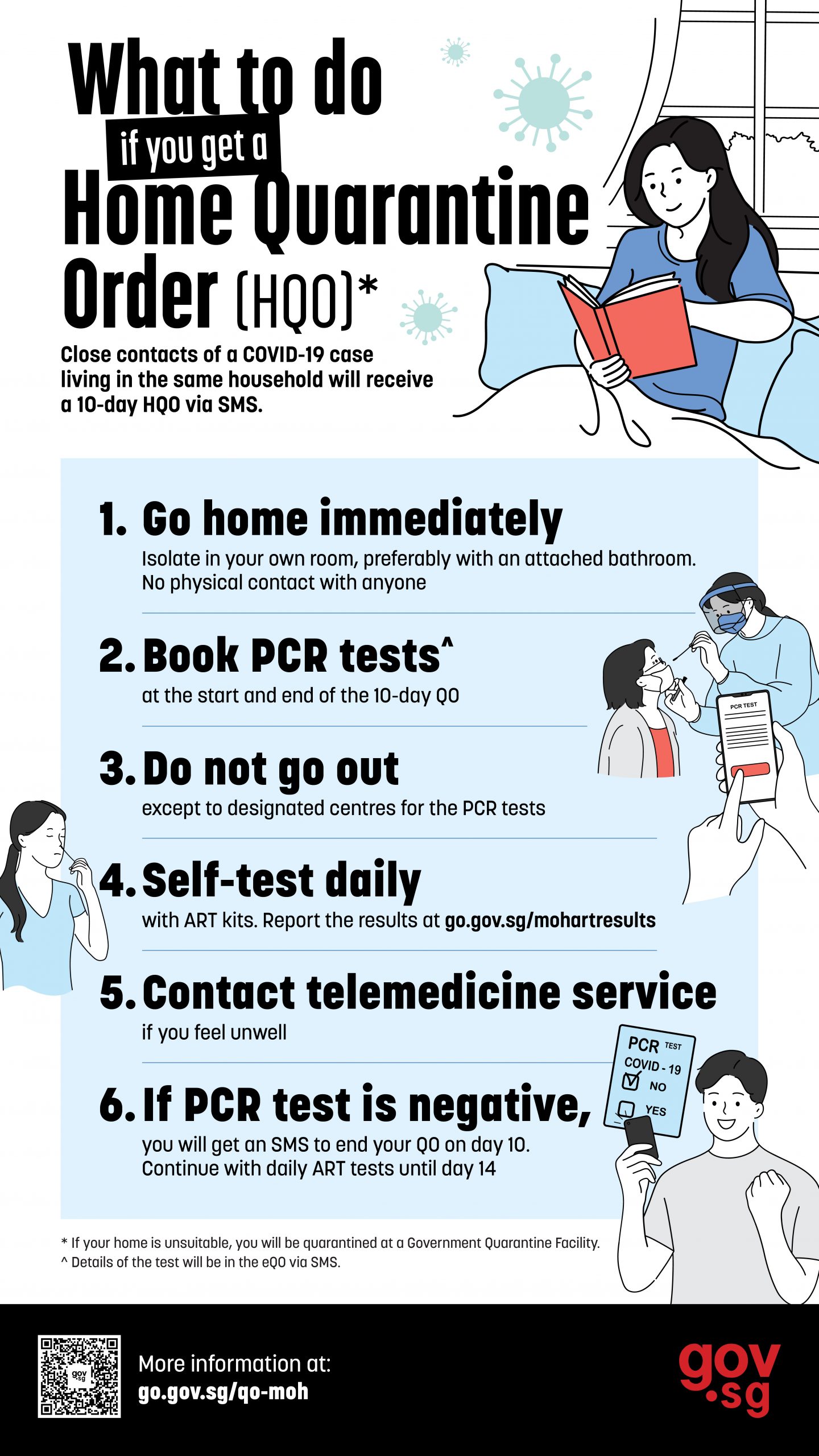
But over the past week, we’ve heard stories such as a lack of instructions. There were also cases where close contacts of positive cases didn’t get quarantine orders.
As Covid-19 recovery shifts to the home setting (at least for those who meet the criteria), here are some things you can do in the unfortunate event that you test positive or be placed on home quarantine.
1. Set aside rooms for self-isolation
Positive cases aren’t the only ones who need to go for self-isolation. Whether a home quarantine order is given or not, close contacts will need to self-isolate as well for 10 days to prevent the spread.
The rooms used should also have windows that can be opened so that they’re well-ventilated.
Ensure that the infected family member is distanced as far away as possible from other family members. Avoid any physical contact to prevent any virus transmission.
If you have kids, move them to a room furthest away from the home recovery room. For instance, if your house has a layout just like the floor plan below, and the recovery room for the infected person is the master bedroom, have your kids sleep in the bedroom closest to the living room.
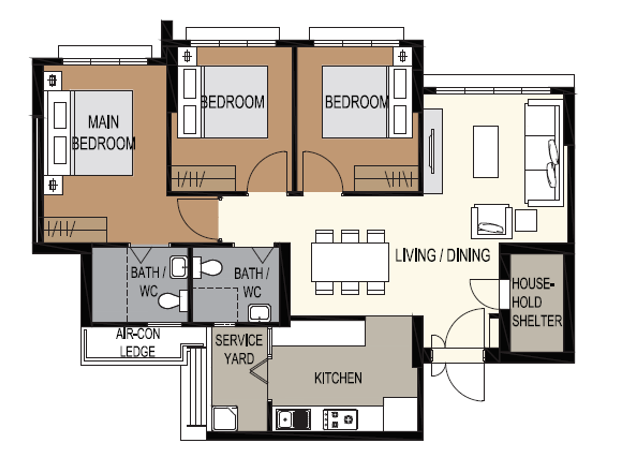
If the layout of your house is like the resale flat floor plan below, you may want to have your kids sleep in bedroom 3.
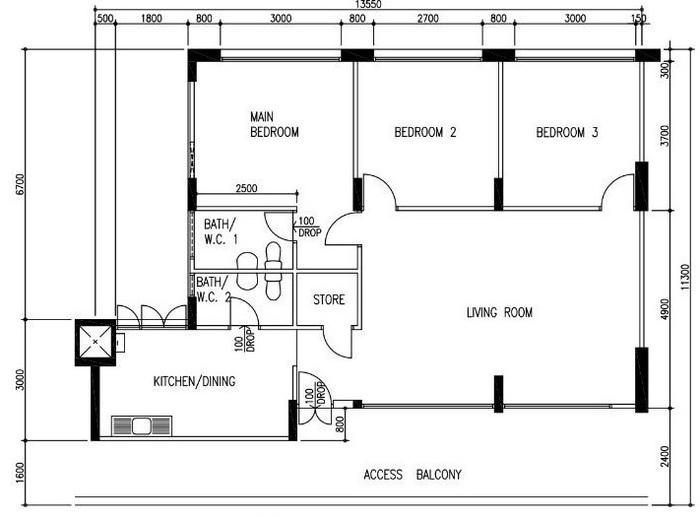
On the other hand, if there’s more than one positive case at home (e.g. two or three infected family members), you might want to have the uninfected family member isolated in the master bedroom instead.
2. Practice good hygiene
This doesn’t just entail washing your hands with soap, but also wearing a mask when going out of the room to carry out tasks like collecting meals. To prevent any contact, ensure that no one is near the doorway when you go out.
Surfaces that are touched frequently, such as door handles, should also be cleaned regularly.
Disinfect the toilet, especially the sink and toilet bowl after each use as well.
3. Use separate toilets, items, etc.
Sharing toilets increases the risk of virus transmission. At the same time, for most of us, we don’t have the luxury of having our own toilets in our own bedrooms.
The next best alternative would be to designate one toilet for the infected family member(s), while the rest use the other toilet.
Likewise, each family member should use their own dishes, cups and utensils.
4. Get thermometers, oximeters (if you don’t already have them)
During the 10-day home recovery period, you’ll need to check and submit your temperature, pulse rate and blood oxygen saturation level to MOH every day. Pulse rate and blood oxygen saturation level can be measured using an oximeter.
Be sure to get these measuring devices if you don’t already have them. (You may also request from the Home Recovery Buddy a home care pack that will include them, but we don’t know how long it will take for them to be delivered.)
5. Get ARTs
Close contacts of positive cases would need to take the ART and submit the results every day during the home quarantine period. You can get the free ones at a Regional Screening Centre where you take your PCR test.
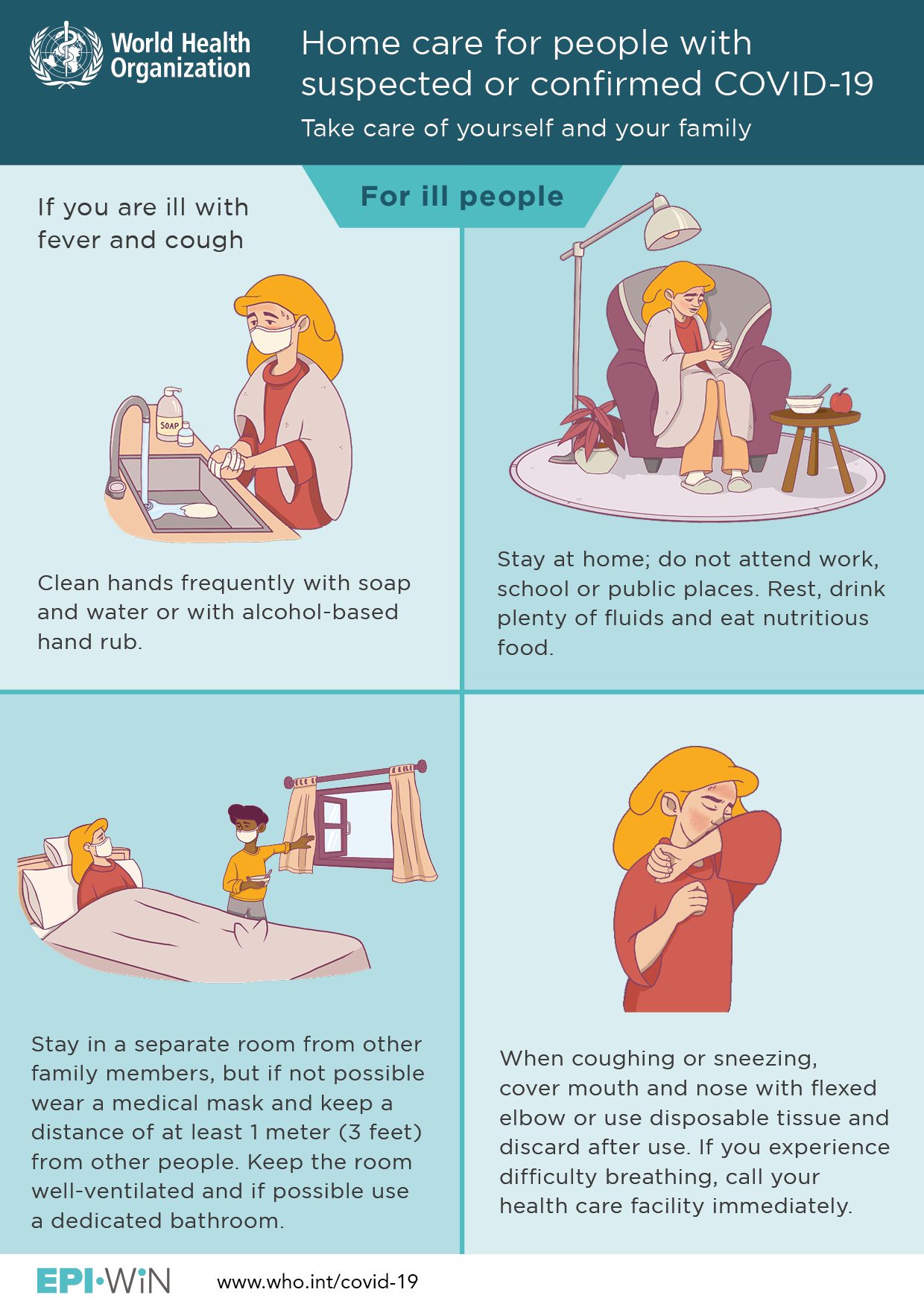
6. Monitor for any symptoms
Whether you or your family members test positive, look out for these Covid-10 symptoms. According to WHO, symptoms can develop between five to six days to as long as 14 days after exposure. The most common symptoms are:
- Fever
- Dry cough
- Tiredness
- Lost of taste or smell
The less common symptoms include:
- Sore throat
- Headache
- Aches and pains
- Diarrhoea
- Red or irritated eyes
For infected cases who feel unwell, contact a doctor via telemedicine from one of these providers. You may also get your medication delivered from them.
For close contacts, if you have any of these symptoms, consult a GP at a Swab and Send Home (SASH) clinic. You can find the nearest clinic here.
However, if symptoms are more severe, such as shortness of breath, chest tightness, palpitations, lightheadedness, or difficulties in breathing, call 995 instead.
7. Arrange for food and groceries to be delivered
Since household members would also have to isolate themselves, you’ll have to arrange for food and groceries to be delivered. If food deliveries are too expensive, you can also consider ordering food catering.
Alternatively, you may ask family members (not in the same household, of course), relatives or friends to help with the groceries.
Any other tips on home recovery from Covid-19? Let us know in the comments section below or on our Facebook post.
If you found this article helpful, 99.co recommends 11 steps to allergy-proofing your home and 5 safe distancing measures deployed by the MCST or MA at condos other residents may not know about.
Looking for a property? Find the home of your dreams today on Singapore’s fastest-growing property portal 99.co! If you would like to estimate the potential value of your property, check out 99.co’s Property Value Tool for free. Meanwhile, if you have an interesting property-related story to share with us, drop us a message here — and we’ll review it and get back to you.
Frequently asked questions
Who is eligible for home recovery?
Home recovery is now the default care for those who are fully vaccinated, aged 12 to 69 years old, have no or mild symptoms, have no severe diseases or comorbidities, doesn’t have household members over 80 years old, or in vulnerable groups, including those who are pregnant, immunocompromised or have multiple comorbidities, and can isolate in a room, preferably with an attached bathroom (which usually is the master bedroom)
I tested positive for Covid-19, but no one has contacted me. What should I do?
While waiting to be contacted, you should isolate yourself at home and call a home recovery buddy 6874 4939 for help. Get your household members to register themselves for a quarantine order.
How do we get food if everyone in the household is in quarantine?
Arrange for food and groceries to be delivered. Alternatively, you can ask your family, relatives and friends for help.
The post How to prepare your family and stay isolated for Covid-19 recovery at home appeared first on 99.co.


